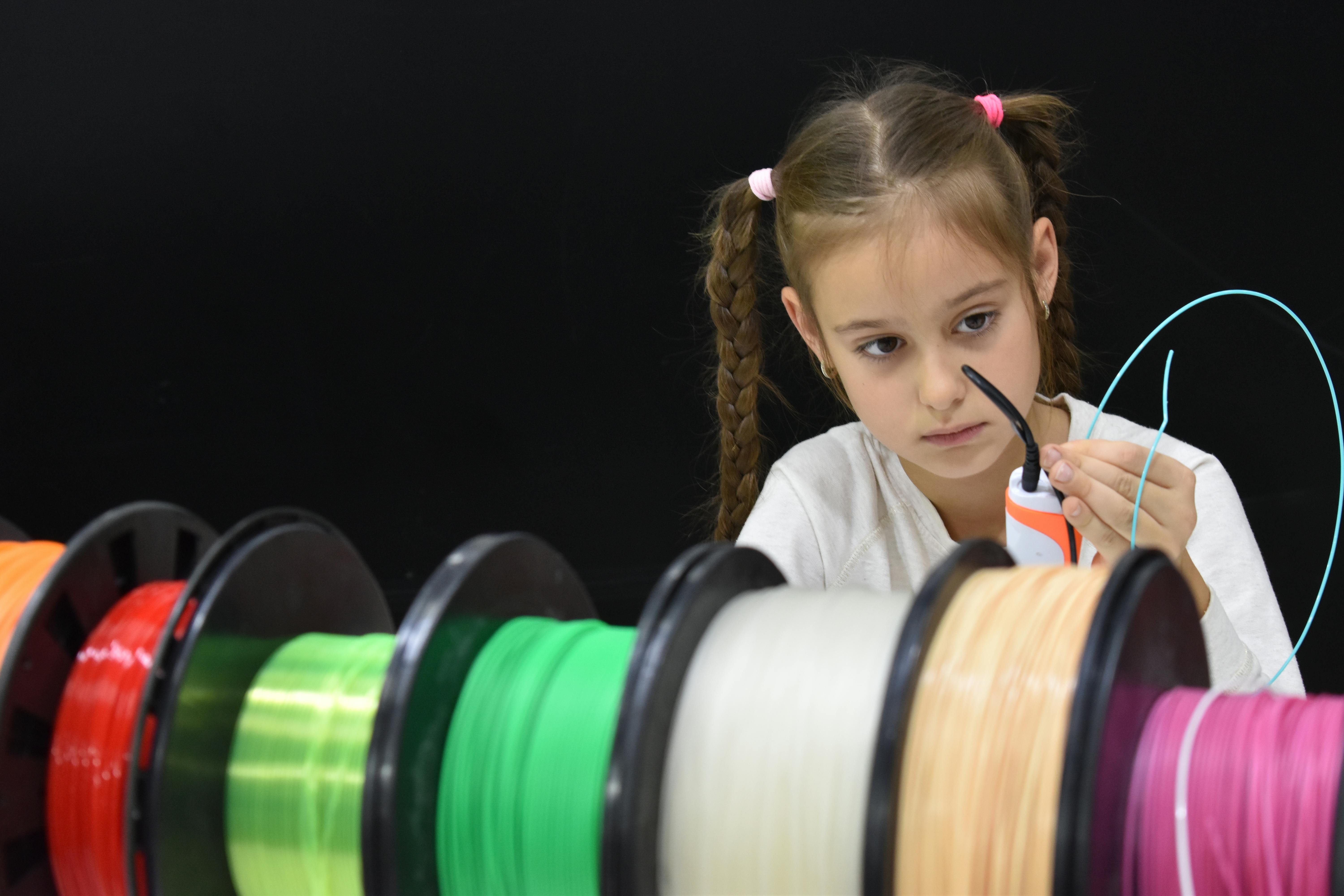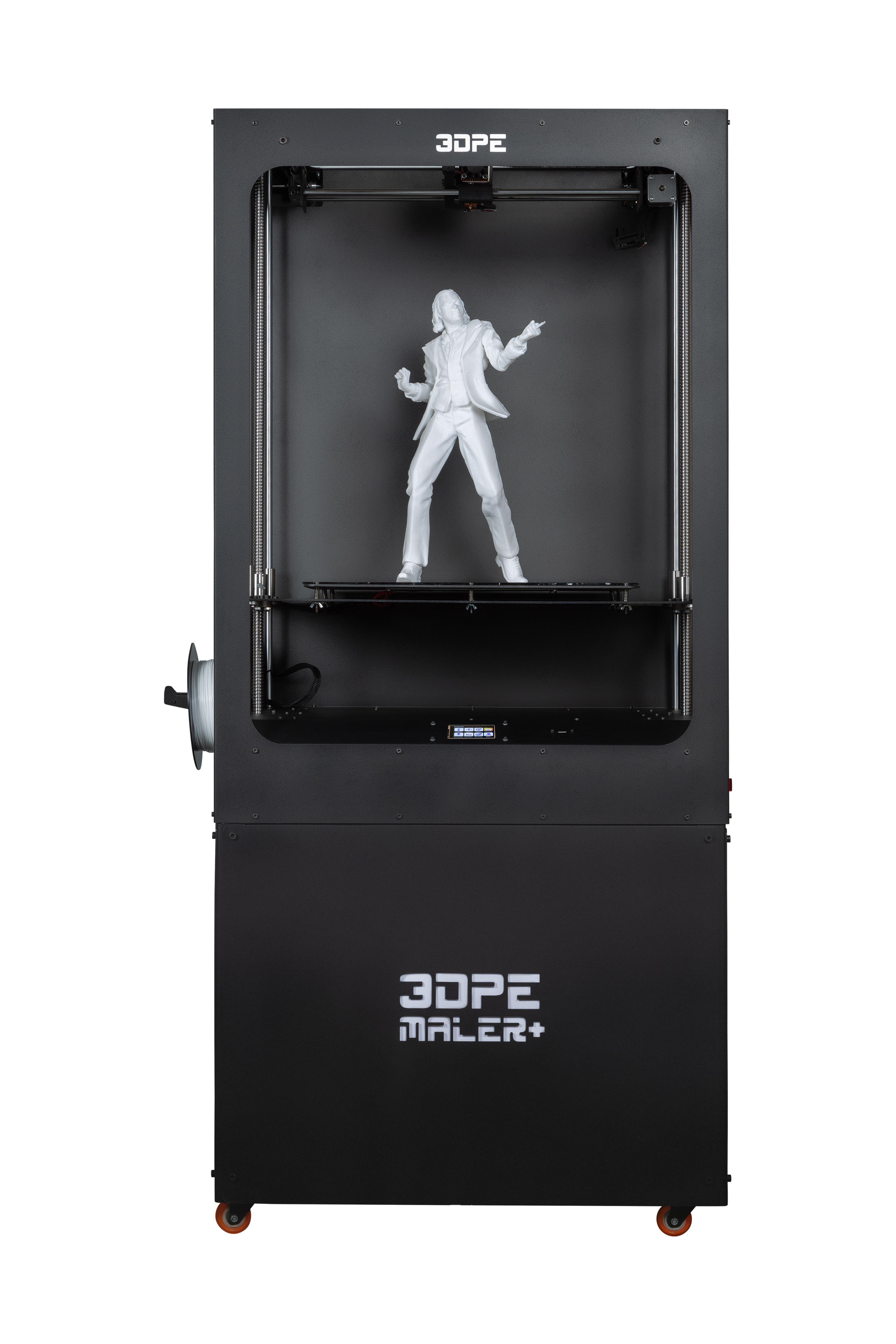
Exploring Biodegradable Filaments: Sustainable Options for 3D Printing
Published on: February 10, 2024
In recent years, 3D printing has become an increasingly popular technology, unlocked creative possibilities and fostered innovations across various industries. However, with the growing adoption of 3D printing comes a growing concern: the environmental impact of the materials used. The typical plastic filaments used in 3D printing, such as ABS (Acrylonitrile Butadiene Styrene), have significant ecological footprints, contributing to plastic waste and pollution. In response, the 3D printing community has turned its focus to more sustainable materials, leading to the development of biodegradable filaments that minimize environmental harm.
This article delves into biodegradable filaments, including their advantages, disadvantages, and practical applications. We'll explore options such as PLA (Polylactic Acid), wood-filled filaments, and other compostable materials, discussing their role in fostering sustainable 3D printing and reducing the environmental impact. For hobbyists, professionals, or enthusiasts, understanding these materials can help support creative projects that align with ecological responsibility.
The Need for Sustainable 3D Printing
The widespread use of plastic materials in traditional 3D printing creates considerable environmental concerns. Plastics like ABS, PETG (Polyethylene Terephthalate Glycol), and nylon are not biodegradable and contribute to long-lasting waste. This waste often finds its way into landfills, oceans, and other ecosystems, where it takes hundreds of years to decompose, releasing harmful microplastics and chemicals.
The carbon footprint associated with plastic production is also substantial. The extraction of fossil fuels and the manufacturing processes involved in creating conventional plastic filaments emit greenhouse gases, accelerating climate change. With environmental issues such as global warming and ocean pollution on the rise, it has become crucial to explore more eco-friendly alternatives to conventional 3D printing materials.
This is where biodegradable filaments come into play. By using renewable resources and reducing waste, biodegradable filaments provide a more sustainable option for 3D printing enthusiasts and industries. Below, we'll explore some of the leading biodegradable filaments available today.
PLA (Polylactic Acid) - The Pioneer of Biodegradable Filaments
Polylactic Acid, commonly known as PLA, is the most widely used biodegradable filament for 3D printing, and for good reason. Derived from renewable resources such as corn starch, sugarcane, or other plant-based sugars, PLA is considered one of the most environmentally friendly 3D printing materials available.
Advantages of PLA
Biodegradability: PLA is biodegradable under industrial composting conditions, breaking down into natural components such as water and carbon dioxide. This makes it a popular choice for those who are environmentally conscious.
Ease of Use: PLA is easy to print with, as it has a low melting temperature (around 180°C to 220°C) and does not require a heated bed. This makes it a suitable material for both beginners and experienced users.
Low Odor: Unlike ABS, which can produce unpleasant fumes when printing, PLA has a relatively low odor. Many users appreciate this quality, especially when printing indoors.
Versatility: PLA is available in a wide variety of colors and can be combined with other materials, such as wood or metal, to create unique composite filaments.
Reduced Environmental Impact: Since PLA is made from renewable resources and requires less energy to manufacture compared to petroleum-based plastics, it has a smaller carbon footprint.
Limitations of PLA
Composting Requirements: While PLA is biodegradable, it requires specific conditions to break down effectively. Industrial composting facilities, which maintain high temperatures and specific moisture levels, are needed for PLA to decompose efficiently. PLA will not degrade as easily in home composting or in natural environments, such as soil or oceans.
Brittleness: PLA tends to be more brittle compared to other plastics like ABS or PETG. This makes it less suitable for applications requiring flexibility or significant mechanical strength.
Low Heat Resistance: PLA has a relatively low heat resistance, which can be problematic for parts that need to withstand higher temperatures. Objects printed with PLA can soften or warp when exposed to heat, making them less suitable for outdoor use or high-temperature applications.
Wood-Filled PLA - Adding a Natural Touch
Wood-filled PLA is a composite filament that combines PLA with wood fibers, providing a natural and aesthetically pleasing finish. These filaments often contain around 20-40% wood particles, allowing users to create prints that resemble real wood in both appearance and texture.
Advantages of Wood-Filled PLA
Aesthetics: Wood-filled PLA filaments produce prints with a unique wooden look and texture, making them ideal for decorative items, art pieces, and home décor projects. Users can also vary the printing temperature to achieve different shades of wood, adding versatility to the final product.
Biodegradability: Since wood-filled PLA is primarily composed of PLA and wood fibers, it retains the biodegradable properties of PLA, contributing to environmental sustainability.
Ease of Printing: Wood-filled PLA is relatively easy to print with and can be used with standard 3D printers. The wood fibers also help reduce warping, leading to more consistent prints.
Limitations of Wood-Filled PLA
Nozzle Wear: The wood fibers in the filament can cause increased wear on the printer nozzle, especially if a standard brass nozzle is used. It is recommended to use a hardened steel nozzle to avoid damage when printing with wood-filled filaments.
Brittleness: Similar to standard PLA, wood-filled PLA is brittle and not suitable for load-bearing applications.
Other Compostable and Biodegradable Filaments
In addition to PLA and wood-filled PLA, there are several other biodegradable filaments available for sustainable 3D printing. Some of the most notable options include:
PHA (Polyhydroxyalkanoates)
PHA is another biodegradable polymer that is produced by bacterial fermentation of sugars or lipids. It is similar to PLA but is more flexible and heat-resistant, making it an attractive alternative for various applications.
Advantages of PHA
Flexible and Durable: PHA is more flexible than PLA, making it suitable for applications where mechanical properties are important. It is less brittle and has better heat resistance.
Biodegradability: PHA is biodegradable and can break down in both industrial and natural composting environments, making it an environmentally friendly choice.
Limitations of PHA
Cost: PHA is generally more expensive than PLA, which can limit its accessibility for hobbyists and budget-conscious users.
Printing Challenges: PHA can be more challenging to print with, requiring specific print settings and often a heated bed.
PETG with Recycled Content
PETG (Polyethylene Terephthalate Glycol) is a popular 3D printing material known for its durability and ease of use. While it is not inherently biodegradable, some manufacturers produce PETG filaments with recycled content, offering a more sustainable option for those who need the mechanical properties of PETG.
Advantages of Recycled PETG
Durability: PETG is known for its strength, impact resistance, and heat resistance, making it ideal for functional parts.
Recycled Content: Using PETG filaments made from recycled materials reduces the demand for virgin plastics and helps minimize waste, contributing to a more sustainable production cycle.
Limitations of Recycled PETG
Not Biodegradable: While using recycled PETG is a step in the right direction, it is not biodegradable. As such, it may still contribute to long-term plastic waste.
Printing Difficulty: PETG can be more challenging to print with compared to PLA, requiring careful temperature control and often a heated bed.
Practical Applications of Biodegradable Filaments
Biodegradable filaments are suitable for a wide range of applications, from hobbyist projects to professional prototyping. Some of the common uses for these materials include:
Prototyping and Product Design
PLA and other biodegradable filaments are popular choices for prototyping, as they are easy to print with and provide high-quality prints. Designers and engineers can use these materials to create prototypes that are not only functional but also environmentally friendly.
Decorative Items and Home Décor
Wood-filled PLA is an excellent choice for creating decorative items, such as vases, picture frames, and sculptures. The natural wood finish adds a unique touch to home décor, and the biodegradable properties of the filament ensure that these items have minimal environmental impact.
Education
Biodegradable filaments like PLA are often used in educational settings, such as schools and universities, for 3D printing projects. PLA's ease of use and low toxicity make it a safe option for students to learn about 3D printing while also fostering environmental awareness.
Packaging and Disposable Items
PLA's biodegradability makes it an ideal material for creating disposable items, such as packaging prototypes, biodegradable utensils, and promotional items. These items can be composted after use, reducing waste and supporting sustainable practices.
Challenges and Considerations for Biodegradable Filaments
While biodegradable filaments offer numerous benefits for sustainable 3D printing, there are also several challenges and considerations to keep in mind:
Composting Infrastructure: One of the major challenges with biodegradable filaments like PLA is the lack of accessible composting facilities. Most municipalities do not have the infrastructure needed to compost PLA effectively, which means that even though the material is technically biodegradable, it often ends up in landfills.
Material Properties: Biodegradable filaments may not always match the mechanical properties of traditional plastics like ABS or PETG. Users need to consider the specific requirements of their projects and whether biodegradable filaments are suitable.
Cost: Some biodegradable materials, such as PHA, can be more expensive than conventional plastics. This can be a limiting factor for users who need to manage project budgets.
Environmental Trade-Offs: While biodegradable filaments are generally more sustainable than conventional plastics, there are still environmental trade-offs to consider. The production of plant-based plastics like PLA requires agricultural resources, which may have implications for land use and food supply.
The Future of Sustainable 3D Printing
The future of sustainable 3D printing looks promising, with ongoing research and innovation aimed at reducing the environmental impact of the technology. Several areas of development are likely to shape the future of biodegradable filaments:
Enhanced Compostability: Researchers are working on developing biodegradable materials that can break down more easily under natural conditions, reducing the need for industrial composting facilities.
New Biopolymers: The development of new biopolymers with enhanced mechanical properties and biodegradability is a key focus for the 3D printing industry. These materials will provide users with more options that align with both functional and environmental requirements.
Closed-Loop Recycling: Advances in recycling technologies could allow for closed-loop systems where 3D printing waste is collected, processed, and reused as filament. This approach would help reduce plastic waste and contribute to a more circular economy.
Education and Awareness: Promoting awareness of sustainable 3D printing practices is essential for driving change within the industry. Educational initiatives that emphasize the importance of choosing eco-friendly materials and reducing waste will play a crucial role in encouraging responsible use of 3D printing technology.
Biodegradable filaments offer a sustainable alternative to traditional 3D printing materials, helping to reduce plastic waste and minimize the environmental impact of 3D printing projects. PLA, wood-filled PLA, PHA, and recycled PETG are among the leading options available, each with its own advantages and limitations. By understanding these materials and their properties, 3D printing enthusiasts and professionals can make informed decisions that align with both creative and environmental goals.
The journey towards sustainable 3D printing is an ongoing process, and while challenges remain, continued innovation and awareness can help drive positive change. Whether you're a hobbyist, educator, or professional, choosing biodegradable filaments is a meaningful step towards making 3D printing a more eco-friendly technology, contributing to a greener and more sustainable future.
